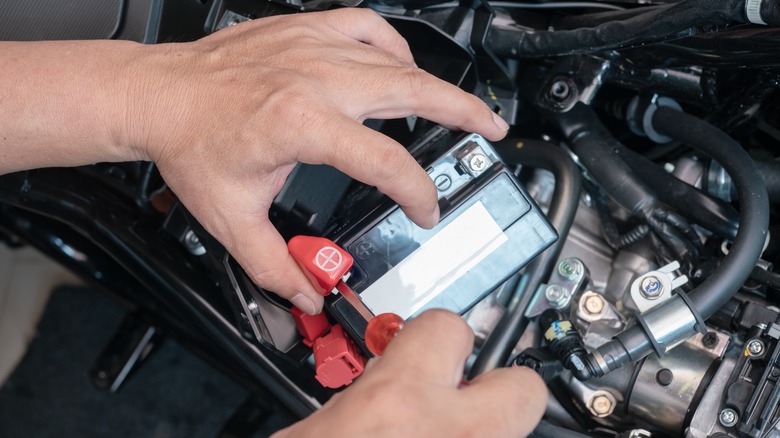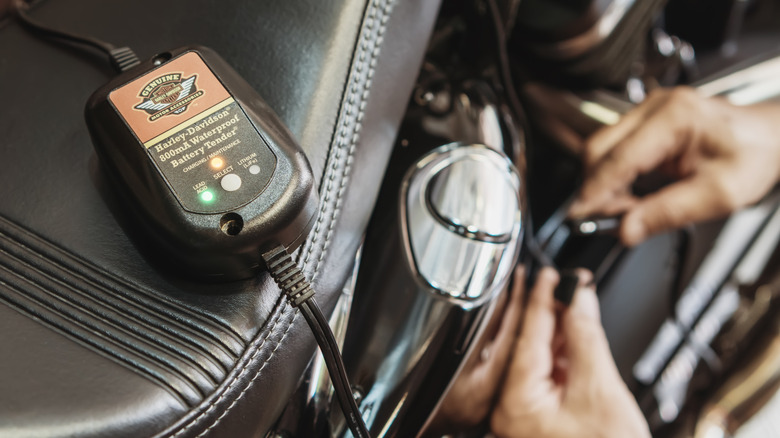Trickle Charger Vs. Battery Tender: Which Tool Fits Your Motorcycle Needs?
We may receive a commission on purchases made from links.
When it comes to keeping your motorcycle battery charged during periods of downtime, two common tools come to mind: trickle chargers and battery tenders. While both help preserve battery life and prevent the frustration of needing to push-start a motorcycle with a dead battery, they serve slightly different purposes and suit slightly different types of riders. Whether you're winterizing your ride or storing it during a long trip, understanding how each of these tools works can save you money, time, and a whole lot of hassle. Let's talk about what they do, when they're useful, and which type of rider benefits most from each one.
Trickle chargers deliver a constant low-voltage charge to the battery to offset the gradual discharge that naturally occurs when the bike isn't running. They can be used to slowly recharge a weak battery or maintain it over a short period of inactivity. However, unless you have a smart trickle charger that can regulate its output, overcharging is a real risk. That's why standard trickle chargers require periodic monitoring.
Battery tenders, on the other hand, are smarter and more hands-off. Once connected, a battery tender monitors the voltage and switches on when it detects a drop below a preset level. Once the battery reaches a full charge again, the tender switches to a "float" or maintenance mode. This reduces the risk of overcharging and makes tenders ideal for long-term storage, especially when you don't want to babysit your battery every few days.
Which riders should choose which tool?
So which one is best for your motorcycle? That depends on how you use (or store) your bike and how much maintenance effort you're willing to put in. Riders who live in colder climates or store their motorcycles for an entire season should lean toward a battery tender. If your bike is going into storage in a garage or storage facility for months, a battery tender like the Battery Tender Plus will automatically maintain the battery's charge with no risk of overcharging, even if you don't check on it often. This makes it the safer, more convenient option for "set it and forget it" situations.
Meanwhile, if you only go a few weeks between rides, or your motorcycle sits unused for shorter periods, a motorcycle trickle charger like the Noco Genius 1 might be a more cost-effective solution. It's a solid option for riders who want to top off their battery before a weekend trip or overcome the marginal draw from onboard electronics. If you're a hands-on rider who doesn't mind checking the battery level and disconnecting the charger once it's full, a basic trickle charger can get the job done just fine.
Which is best, a trickle charger or a battery tender?
Ultimately, the best choice between a trickle charger and a battery tender depends on how often you ride, how long you store your bike, and how much oversight you want to give battery maintenance. Battery tenders excel when the motorcycle will sit unused for weeks or months at a time (such as over the winter). They're the go-to option for long-term, no-fuss battery preservation, ideal for riders who store their bikes for the off-season or simply want peace of mind.
By comparison, trickle chargers work well when you plan to use the bike occasionally during the storage period (such as starting it once a week or taking it for a short ride). They suit those looking for a basic way to keep their battery from dying in the short term, especially when used with care and attention. No matter which route you choose, keeping your motorcycle's battery charged and healthy ensures it's ready when you are — whether that's tomorrow morning or next spring.


